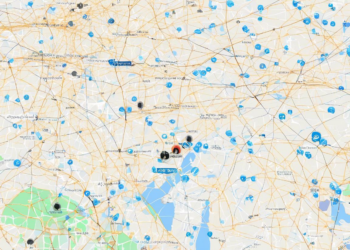Making Zongzi for Dragon Boat Festival

The Dragon Boat Festival, also known as Duanwu Jie, is a traditional Chinese holiday celebrated on the fifth day of the fifth lunar month. It’s a time for families and friends to come together and enjoy delicious food, engaging activities, and the vibrant cultural traditions that make this festival so unique. One of the most iconic and beloved foods associated with Dragon Boat Festival is zongzi.
What are Zongzi?
Zongzi are pyramid-shaped dumplings filled with various ingredients, wrapped in bamboo leaves and then steamed or boiled. They’re a symbol of good luck and prosperity, and they play a central role in Dragon Boat Festival celebrations.
The History of Zongzi
The origins of zongzi can be traced back to the ancient Chinese legend of Qu Yuan, a loyal minister of the Chu kingdom who drowned himself in the Miluo River to protest the corruption of his government. To prevent fish from eating his body, people threw rice wrapped in leaves into the river. This act eventually evolved into the tradition of making and eating zongzi during the Dragon Boat Festival.
Ingredients for Zongzi
The most common ingredient in zongzi is glutinous rice, which gives the dumplings their chewy texture. But the fillings can vary greatly, depending on regional traditions and personal preferences.
Here are some popular zongzi fillings:
- Sweet fillings: Red bean paste, sweet lotus seed paste, dates, and mung beans are popular sweet fillings.
- Savory fillings: Pork, chicken, mushrooms, salted duck eggs, and other savory ingredients are often used in savory zongzi.
Steps to Make Zongzi
Making zongzi is a traditional art that involves careful preparation and skillful wrapping. Here are the general steps involved:
- Prepare the rice: Soak the glutinous rice in water for several hours to soften it.
- Prepare the fillings: Depending on your choice of filling, prepare it according to your recipe.
- Prepare the bamboo leaves: Wash and soak the bamboo leaves in hot water for several minutes to soften them.
- Wrap the zongzi: This step requires a bit of practice. Take a bamboo leaf and fold it into a funnel shape. Add a spoonful of filling, followed by a layer of rice. Fold the leaves over the rice and filling to create a pyramid shape, then secure it with twine or string.
- Steam or boil the zongzi: Steam or boil the zongzi for several hours, depending on their size and the type of filling.
Tips for Making Delicious Zongzi
Here are some helpful tips to ensure your zongzi turn out delicious:
- Use fresh, high-quality ingredients: The quality of your zongzi depends on the ingredients you use. Choose fresh bamboo leaves, high-quality rice, and your favorite fillings.
- Soak the rice thoroughly: Soak the glutinous rice for at least 4 hours to ensure it’s soft and cooks evenly.
- Use enough filling: Don’t overstuff the zongzi. A good balance of rice and filling is key to delicious zongzi.
- Secure the wrapping: Make sure the leaves are tightly wrapped around the filling to prevent the zongzi from falling apart during cooking.
- Cook for the right amount of time: Cook the zongzi until the rice is cooked through and the filling is heated.
- Store properly: Store cooked zongzi in an airtight container in the refrigerator. They will last for several days.
Regional Variations of Zongzi
Zongzi traditions vary across different regions of China, each with its own unique flavors and fillings.
- Cantonese Zongzi: Cantonese zongzi are typically smaller in size and often filled with sweet fillings like red bean paste or lotus seed paste.
- Shanghainese Zongzi: Shanghainese zongzi are known for their savory fillings, which often include pork, chicken, or mushrooms.
- Sichuan Zongzi: Sichuan zongzi are known for their spicy flavors, often incorporating ingredients like chili peppers and Sichuan peppercorns.
Zongzi Beyond China
Zongzi has become increasingly popular beyond China, with adaptations and variations being developed in other Asian countries. In Vietnam, for example, zongzi are called bánh chưng and are filled with mung beans, pork, and other savory ingredients. In South Korea, zongzi is known as chuseon and often filled with red bean paste or sweet potato.
Enjoying Zongzi During Dragon Boat Festival
Zongzi is a delicious and culturally significant food that is enjoyed by people of all ages during Dragon Boat Festival. Whether you make them at home or buy them from a local vendor, zongzi is sure to be a highlight of your Dragon Boat Festival celebration.
Here are some ways to enjoy zongzi during Dragon Boat Festival:
- Serve zongzi as a main course: Zongzi can be enjoyed as a main course, especially savory zongzi.
- Serve zongzi as a snack: Sweet zongzi can be enjoyed as a snack or dessert.
- Pair zongzi with other Dragon Boat Festival foods: Zongzi goes well with other Dragon Boat Festival foods like rice dumplings, sticky rice cakes, and sweet tea.
- Share zongzi with family and friends: Zongzi is a food that is meant to be shared with loved ones.
Conclusion
Making zongzi is a rewarding and delicious way to celebrate Dragon Boat Festival. It’s a tradition that has been passed down for generations and continues to be enjoyed by people around the world. By learning how to make zongzi yourself, you can not only enjoy this delicious food but also connect with your cultural heritage and celebrate the rich history of Dragon Boat Festival.













